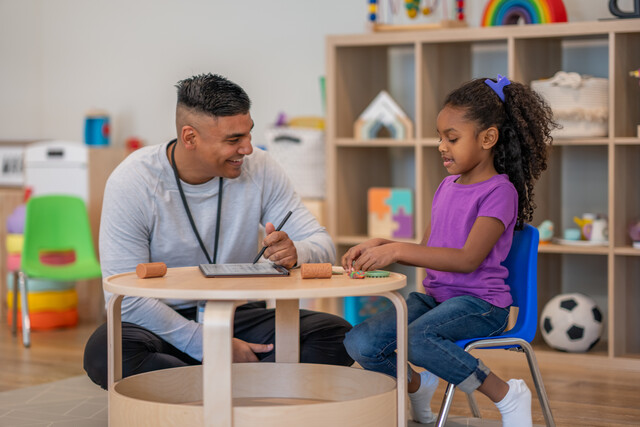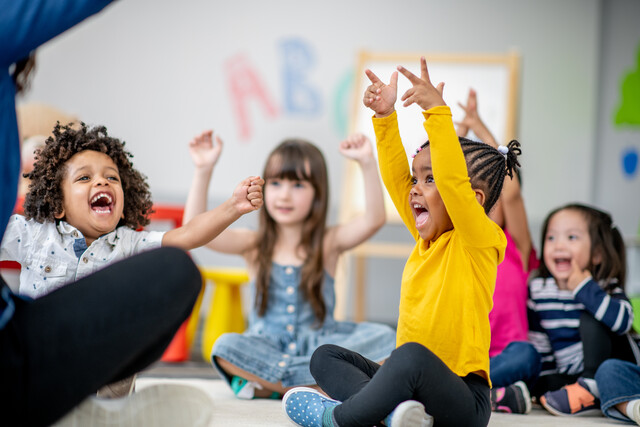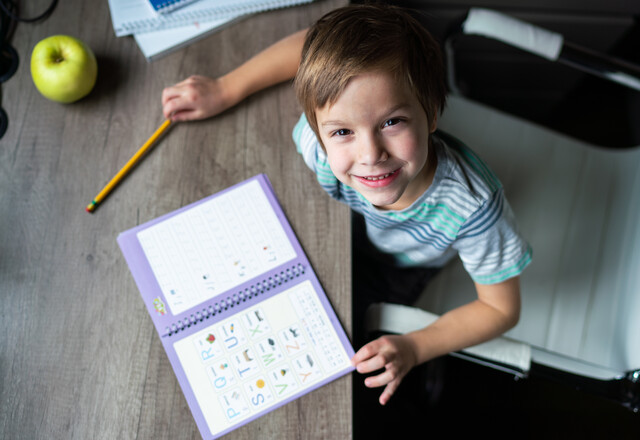Introduction
Any strategy must naturally start with testing to determine an individual's capabilities, as well as weaknesses. Common strategies include a "scaffolding" approach, a "bridging" approach, and one-on-one mediated instruction approach.
These brief summaries are meant as an introduction to various methods that have been developed over the years to help students, as well as adults, cope with academic challenges due to a learning disability. Of course, other strategies are employed in schools at multiple age groups around the country, but these are the most well-known and used today.
Testing Strategies
In this article, we'll focus more on testing methods such as CASAS and TABE, two of the most commonly used in academic environments. Numerous CASAS products, tests, and training offer teachers and educators as well as parents access to user-friendly assessment of students that help to not only measure skills, but help with construction plans, progress reports, and monitoring.
We'll start with testing and assessment that help provide strategies for learning with older students, as well as adults. These types of testing assessments, along with standardized school testing at all ages, helps to determine where students are in relation to national averages.
Two Common Testing Approaches
Test of adult basic education, or TABE, provides three different types of assessment in regard to adult education; diagnostics, summative, and formative assessments. Educators around the country commonly use TABE testing to effectively assess knowledge and skills of High School, college and adult learners in language mechanics, reading, math, language, vocabulary, and spelling.
The comprehensive adult student assessment system, or CASAS, is a nonprofit organization that assesses curriculum development of basic life skills for children and adults. The assessment is not only used by educators, but in numerous state and federal government agencies, as well as throughout business and industrial fields. The assessment tests proficiency in basic skills and language for more than 5 million youths and adults in the United States on a yearly basis. At its most basic definition, C ASAS measures the progress of students or learners on a standardized scale that measures from low literacy skills (early grade school) to high school graduation as well as transitions into post-secondary education and/or training scenarios.
The CASAS assessment testing process enables educators to measure speaking, math, writing, reading, and listening skills of various ages, and is often used in adult education. The CASAS testing approach provides assessments for beginner literacy reading, functional writing, as well as secondary level assessment (for example, in monitoring student progress for obtaining a GED, a high school diploma, or post-secondary education).
A basic skills test includes assessments of roughly 360 life skills that both children and adults need to become able, competent, and functioning members of society. Competencies measured by CASAS range through all grade school and high school levels and provide transitions to post-secondary education as well as training in nine separate fields:
- Independent living
- Health
- Government and Law
- Learning and thinking skills
- Math
- Community resources
- Consumer economics
- Employment
- Basic communication
Results in these areas provide instructional objectives for educators in designing curriculum, as well as monitoring student progress, in order to provide feedback to students as well as their instructors in determining focused targets for further academic instruction.
In the middle school or junior high years, tests may include the common core for high school students based on core subject areas, benchmark testing, language proficiency and standardized achievement.
Standardized testing methods and methodologies utilized in elementary, middle school, and high schools around the country also provide measurable data for student progress on a regular basis. These measurements are the first step (following diagnosis) toward developing catered learning strategies for each student.
Instructional Strategies
To date, more than 1,000 different types of instructional strategies and methods are used in learning environments. For example, there's the 10/2 strategy, which defines a situation where the teacher presents information for 10 minutes, followed by students sharing and thinking about that information for two minutes, and then the process repeats.
Acting out or action projects are strategies that take learning into a three-dimensional realm, where students act out what they've learned, such as a role in a historical play.
In the adaptive learning environment model, an individual -- or the entire class -- can help integrate a student with special needs into a classroom environment, while affinity strategies involve a classroom brainstorming session that encourages more vocalization from shy or hesitant students in regard to levels of participation.
When it comes to teaching strategies, finding a method that works is of utmost importance, which is where responsive teaching provides numerous benefits. Responsive teaching recognizes and responds to methods of instruction for all students and learning levels. It means providing, at times, student-centered instruction, redefined or reshaped curriculum, requiring the teacher to become the facilitator, and sometimes, in mediated instruction strategies.
In any instructional strategy, the teacher may need to determine appropriate strategies for the majority of the classroom, as well as accommodations for students with learning disabilities or other issues which have caused them to fall behind. The process for such includes:
- Instruction (verbal, written, visual)
- Determining accommodations - such as oral testing, rather than written testing, use of audiovisual resources, rather than textbooks, or allowing extra time for assignments and testing
Student-Centered Instruction
- Sharing responsibility of instruction and mode of instruction. For example, through the use of groups or students, themselves, leading discussions or teaching concepts
- Promoting student interaction - for example, students create the list of topics or issues they would like to study or research and also choose their own reading materials
- Creating classroom projects that promote hands-on or discovery curriculum, both in the school as well as outside community environments
The Jigsaw Approach
The jigsaw learning technique is a cooperative learning approach to multicultural classroom instruction. This works well in elementary and middle school, as well as high school environments. In this methodology, each student becomes one piece of a large jigsaw puzzle, which symbolizes the classroom. Such an approach teaches children that every individual in the classroom is a valuable asset in completing "a puzzle" or complete picture when it comes to assignments and reports, and that every child has his or her place in the world.
This approach also requires children of all ages to be given one task that becomes part of the whole. For example, if students are learning about an important American history event such as the American Revolution: One student is assigned to provide research and information on George Washington, while another student may be required to research and provide information on the Battle of Concord and Lexington; and yet another to research and provide information on Paul Revere or General Burgoyne.
In essence, each student brings one portion of information into their group. As a group, the students are encouraged to impart their knowledge and research regarding their subject to the others. Following this type of approach, a test is given to the entire group. In this way, students learn to contribute, listen, and work together in order to reach a common goal, which is a good grade.
This type of learning strategy can be especially beneficial to students with learning disabilities, as it encourages them to focus on one major aspect of their contribution toward the group knowledge.
Scaffolding Approach
Scaffolding is defined as a technique where a teacher performs a task or learning strategy, repeats it, and then gradually encourages those strategies, actions, or approaches onto the student. For example, scaffolding is an excellent technique for situations where a student is hesitant to perform a requested task or assignment independently.
Carefully defining the task
Verbalizing (out loud) specific or non-specific instructions throughout the task
Properly sequencing activities or steps within a task
In a classroom environment, continual assessment and evaluation may be prompted not only to a teacher's direct observation of progress, but by requesting that students assess their own behaviors and skills following this type of instruction.
Bridging
Communication - In such a scenario, the teacher may divide students into two lines with students facing each other, each given a question to ask the person across from them. This encourages communication between students in a unique educational setting that promotes interaction with others.
Use of physical objects, or prompts, can serve as background to a learning scenario. For example, when teaching young children about Johnny Appleseed, the teacher may have physical objects used to make applesauce or apple pie, such as apples, sugar, a pie tin, and so forth.
The options for bridging the gap between book learning and virtual, or three-dimensional, learning are only limited by the teacher or educator's imagination. Bringing educational topics "to life" is a very effective way of engaging and involving all age groups, learning types, and capabilities.
Conclusion
As mentioned in the introduction, instructional strategies for learning disabilities are employed in all classroom environments, including those for learning-disabled children of all ages. Regardless of testing and approach to instructional strategies, teachers and parents must also be aware of practical approaches to initiating those strategies based on age.
Practical Approaches to Instructional Strategies for Learning Disabilities (Part Two)
Introduction
The need to focus approaches based on age is vital in encouraging students with learning disabilities.
tailoring, adapting, and continually assessing such approaches to instruction for special needs is not set in black and white, but needs to be continually assessed, monitored, and adapted to changing scenarios, behaviors, and capabilities of the individual student.
In this section, we'll provide basic practical approaches to such situations, but teachers and parents should always be open to exploring options and possibilities when it comes to teaching a child with any learning disability.
Approaching Strategies for Learning Disabilities
It's important for teachers and instructors of any age group to focus on the overall purpose of a learning strategy, regardless of learning disability, age, or grade level. For example, strategies should always, regardless of age or grade level, focus on:
- Motivation
- Monitoring
- Organization
- Attention and listening capabilities
- Memory
- Step-by-step critical thinking or problem-solving approaches
- Encouraging questions
- Helping students deal with assignment or test anxiety
According to the No Child Left Behind Act of 2001, students with disabilities are required to be held to the same academic/educational standards for grade-level achievement as their classmates.
When it comes to differentiating curriculum in a classroom environment, or when incorporating learning strategies for classrooms with learning disabled students, there are no simple answers. The teacher can't individually create 30 different lesson plans for 30 different students; and taking the middle ground between high achievers and low achievers is also ineffective – for everyone involved. That's where differentiated instruction comes in. This is an approach that takes into consideration the diversity of classroom learners and utilizes a number of activities or methods to reach those students.
Differentiation can be used on students from pre-K through high school and beyond, based on need. Adaption and modification may be required after careful consideration of different learning styles and academic needs. For example, a teacher can break down differentiated instruction with:
- A single student
- A small group of students
- An entire classroom
Differentiating should not be equated with providing unrelated or separate activities or assignments for every student, but offering activities that are interrelated and focused on specific student needs. In order to achieve this, the teacher or instructor must:
- Know what they want the student to learn (in regard to a skill or academic information)
- Have determined what students know and what they don't know regarding that skill or academic information
- Assess and decide which instructional method and materials will address those needs
- An ability to cast or assess knowledge or mastery of the skill or academic content presented
For example, when addressing an instructional method and materials, a teacher can employ a number of supporting materials, including pictures, graphics, or visuals, video clips, magazine or newspaper articles, textbooks, or fiction, or nonfiction written materials available in various reading levels.
Continually "mixing up" teaching approaches between hands-on, task oriented activities, visual or verbal instruction, a teacher encourages critical thinking skills and comprehension, while preventing students (of all capabilities) from growing bored.
For example, differentiating classroom involvement with one-on-one work with students offers the same concept taught to the entire classroom, but uses a different method of approach, such as flash cards with one student, or performing a "mock interview" with another. It's up to the teacher to know and understand her students in order to capitalize on their strengths as well as educational needs.
A successful strategy for teaching students of all ages with learning disabilities is to place such students in an arena where they can compete. Learning strategy instruction can be utilized on pre-K through high school students, as well as those in adult education environments. For example, major steps involved in such strategies include:
- An educational concept, a mathematical formula, a reading assignment, or a history lesson, is broken down into small, incremental steps.
- The teacher continually supplies feedback and encourages questions, comments, and discussion of content.
- The teacher widely utilizes graphics, diagrams, photographs, or pictures to emphasize verbal instruction.
- The teacher continually provides well-focused, independent, and intensive areas of practice for students with learning disabilities.
- The teacher models or provides visual and actionable step-by-step approaches to instruction.
You may recognize this approach as a scaffolding approach, which starts out with heavy emphasis on the teacher providing the cues or a process through instruction, gradually encouraging students to mimic and develop those skills on their own.
When teaching children with learning disabilities, regardless of age, it's important for educators to continually assess and monitor progress of such students through the curriculum. It's equally important for teachers and parents to understand that the concerns for the student must focus on individual learning, achievement, and progress.
The key is for educators who teach the same grade level for years to become extremely familiar with the goals and averages of students, and then come up with strategies or instructional approaches that will help students get as close to those averages as possible without separating children with learning disabilities from the overall classroom instruction.
For this reason, educators are encouraged to adapt curriculum and materials in order to give those with learning disabilities a real chance to compete in their environment without giving them completely different materials, or setting different standards or expectations.
Yes, expectations for those learning disabilities may be adapted by student, age, and disability, but should never be used to "separate" that student from the general school population.
The concept of instructing children of all ages with learning disabilities is, as students can see, not a simple concept. Lines are often blurred, as are strategies, again depending on age, skill levels, capabilities, and the personality of the student. The learning strategies and approaches to instruction for those with learning disabilities are not meant to be implied in all situations. In some cases, instructors may need to blend more than one learning strategy when it comes to a practical approach for a junior high school student, while one will work quite well with a preschooler or a high school student.
The key is to continually assess and monitor progress in skill level, cognition, and capabilities of students, not just within a semester or term, but also on a weekly, and even daily, basis.
Conclusion
While teachers have more than 1,000 learning strategies at their disposal to utilize in classroom environments based on age and grade levels, it is vital to remember that some children cannot be placed in a certain category. Much like trying to fit a round peg into a square hole, categories in a child's learning ability, skill level, or personality aren't always simple.
Children, parents and teachers should take heart however, because learning is an ongoing process and is not limited to classroom environments. Many famous scientists, political leaders, and celebrities struggled with classroom-based studies and environments, and then blossomed in the "real world."






















